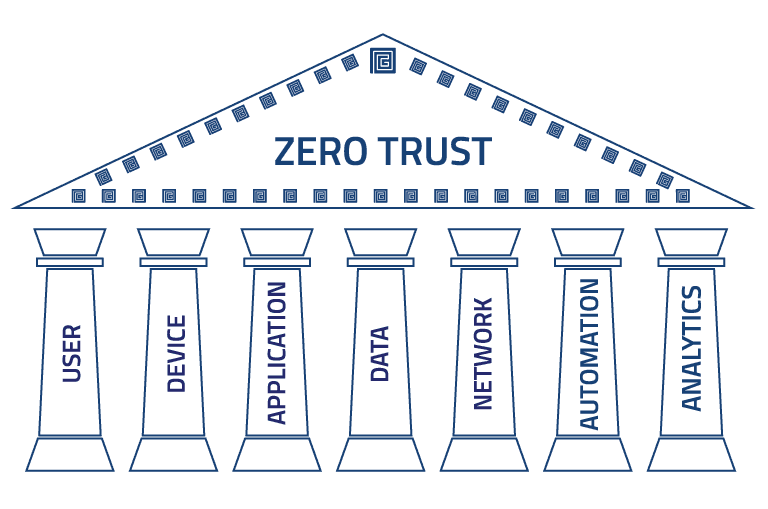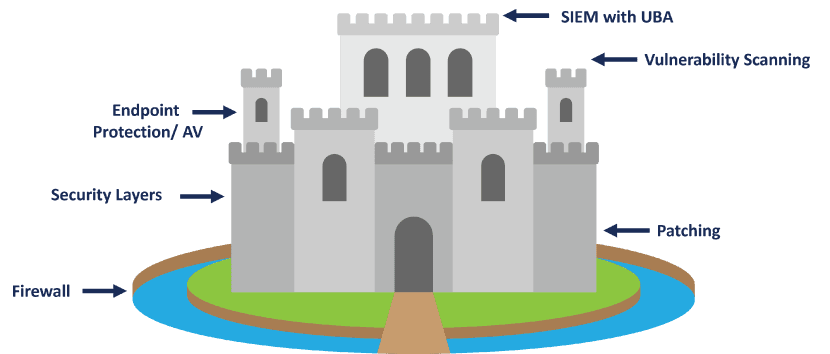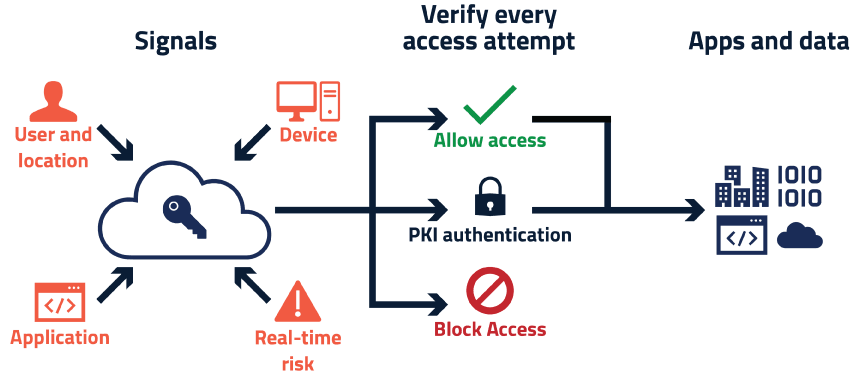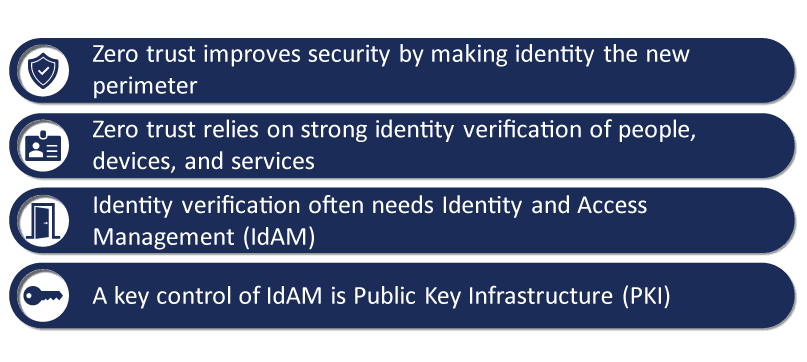NEVER TRUST, ALWAYS VERIFY
Organisations should not automatically trust anything inside or outside its perimeters… and instead … Must verify anything and everything trying to connect to its systems before granting access. Enter PKI. PKI is one of, if not the most secure way to establish Zero Trust.


Zero Trust
The Pillars of Zero Trust

User
User Identification, authentication, and access control
Device
Validation of user and autonomous devices to ensure trustworthiness and level of risk
Application and Workload
Systems, Services and applications are protected against unauthorised access
Data
Data classification to ensure it is only accessed by those with permission
Network
Defining network access to stop unauthorised access by people or things.
Automation
Automates security and network operational processes across the ZTA by orchestrating functions between similar and disparate security systems and applications.
Analytics
Real time User and system analytics between all Zero Trust components
Goal of Zero Trust
Eliminate Need for Trust
Prevent Vulnerability Exploitation
Create a More Secure System
How do we use it?
Gain Visibility and Context
Use Zero Trust to gain visibility and context for all traffic across users, devices, locations and applications, plus zoning capabilities for visibility into internal traffic
Identify business processes and risks
Use Zero Trust to identify your business processes, users, data, data flows, and associated risks, and set policy rules that can be updated automatically, based on associated risks, with every iteration
Adding authentication methods
Adding authentication and other verification methods will increase your ability to verify users correctly
Data Breaches
The available attack surface is growing exponentially due to accelerated digital transformation with remote workers, BYOD, partner access and cloud migration.
According to a McAfee survey:
- Average enterprise employee uses 36 Software as a Service apps
- Average enterprise uses over 1900 cloud services
- Means protection of a perimeter does not protect the organisation
- Protection of the end point is essential
- What about more secure environments? Some don’t Allow SaaS at all.
- Even more important in perimeter protected environments
- Need to be able to halt transiting across the network from a single breach point.
Zero Trust and PKI
- PKI provides the credentials that allow for that secure identification
- PKI Provides strong user and Device Authentication
- PKI key in NIST Zero Trust Architecture Approach. See SP800-207
Identity and Certificate provisioning must be automated. This:
- Average enterprise employee uses 36 Software as a Service apps
- Average enterprise uses over 1900 cloud services
- Means protection of a perimeter does not protect the organisation
- Protection of the end point is essential
Old Approach

New Approach

Relies on?

Use Cases
Authenticate
To identify the device and user making the request
Seamless
Allow access seamlessly
Encrypt
To prevent eavesdropping
Sign
Ensure data is not altered such as logs to aid in forensic analysis
In Practice - Learn and Adapt
Verify
Validate
Limit access and privilege
Experience secure PKI and Key Management as a Service
Cogito Group also provide managed PKIs or Public Key Infrastructure and Key Management as a Service. SecureSME combines the best security outcomes that can be achieved with a self-managed PKI at a reduced cost.

